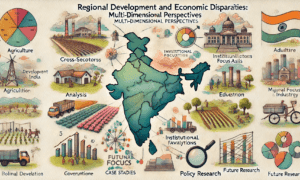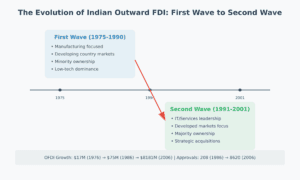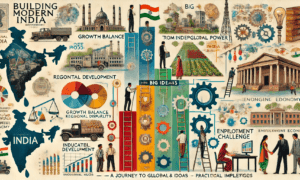Setting the Stage Imagine being the captain of a small boat when a massive storm hits. That’s exactly what happened to India’s small and medium enterprises (SMEs) during the global financial crisis. These businesses, which form the backbone of India’s economy, found themselves navigating treacherous waters as the waves of global economic turmoil reached Indian shores.
The Numbers Tell a Story Let’s look at what these small giants mean to India:
- They doubled in number from 7 million to nearly 13 million between 1991 and 2007
- They created jobs for 31 million people, up from 16.6 million in the early 1990s
- Their output grew four times over during this period
The Export Dream: A Reality Check Remember the excitement of the 1990s when India opened its economy? Many SMEs dreamed of going global. But the reality wasn’t quite as rosy:
- Export growth was like a roller coaster ride – soaring one year, plunging the next
- Eight product groups (including garments, engineering goods, and software) dominated exports
- Despite all the talk of globalization, most SMEs struggled to find their footing in international markets
When Global Storms Hit Home The global financial crisis of 2008 exposed the vulnerabilities:
- Export orders started vanishing
- Garment exports dropped by 9.62%
- Jewelry exports plummeted by 34%
- Even the promising pharmaceutical sector in Gujarat found itself running below capacity
David vs Goliath: The Home Market Battle An interesting twist emerged: As export-oriented SMEs lost their foreign customers, they turned to the domestic market. This created an unexpected challenge:
- Export-focused companies, typically more efficient and tech-savvy, began competing with local market-focused SMEs
- Smaller businesses found themselves squeezed from both sides – facing international competition and struggling with domestic challenges
The Risk Factor: Walking the Tightrope SMEs faced multiple risks that larger companies could more easily handle:
- The “One Customer” Trap: Depending too heavily on a single buyer
- The Payment Puzzle: Struggling with delayed payments
- The Price Rollercoaster: Dealing with sudden changes in input costs
- The One-Person Show: Most SMEs relied heavily on a single owner/manager
- The Natural Threats: From floods to fires, lacking insurance coverage
The Way Forward: Building Resilience The paper suggests several survival strategies:
- Diversifying customer base instead of relying on few buyers
- Including price protection clauses in contracts
- Getting proper insurance coverage
- Looking beyond exports to tap domestic market potential
- Investing in better business practices and technology
The Big Lesson Perhaps the most important insight is that being “global” isn’t always the answer. Many Indian SMEs might be better served by:
- First building strong foundations in the domestic market
- Developing better financial protection
- Creating robust business processes
- Focusing on sustainable growth rather than rapid expansion
The story of Indian SMEs during this period is not just about survival in tough times – it’s about learning to build sustainable businesses that can weather any storm.
Academic Abstract:
This paper addresses emerging issues concerning externally-oriented SMEs in India and the nature of important business risks faced by them during the period of global financial crisis. The unimpressive export performance of SMEs during the period of reforms is also a reflection of the limitations of the institutional support as also weak forms of production organization. The state needs to play a proactive role in contributing to enhancing SME competitiveness. Whereas financially well protected Indian SMEs are likely to be more competitive and efficient, a greater recognition of the potential of domestic market and provision of business-facilitating infrastructure holds the key for success of SMEs across
Learn More:
Full citation: Das, Keshab and Jaya Prakash Pradhan (2010), ‘Externally-oriented Small and Medium Enterprises in India: Predicament and Possibilities’, Economics, Management, and Financial Markets, 5(3), pp.192–204, Publisher: Addleton Academic Publisher.
Learn More:





































